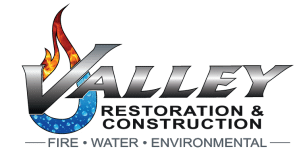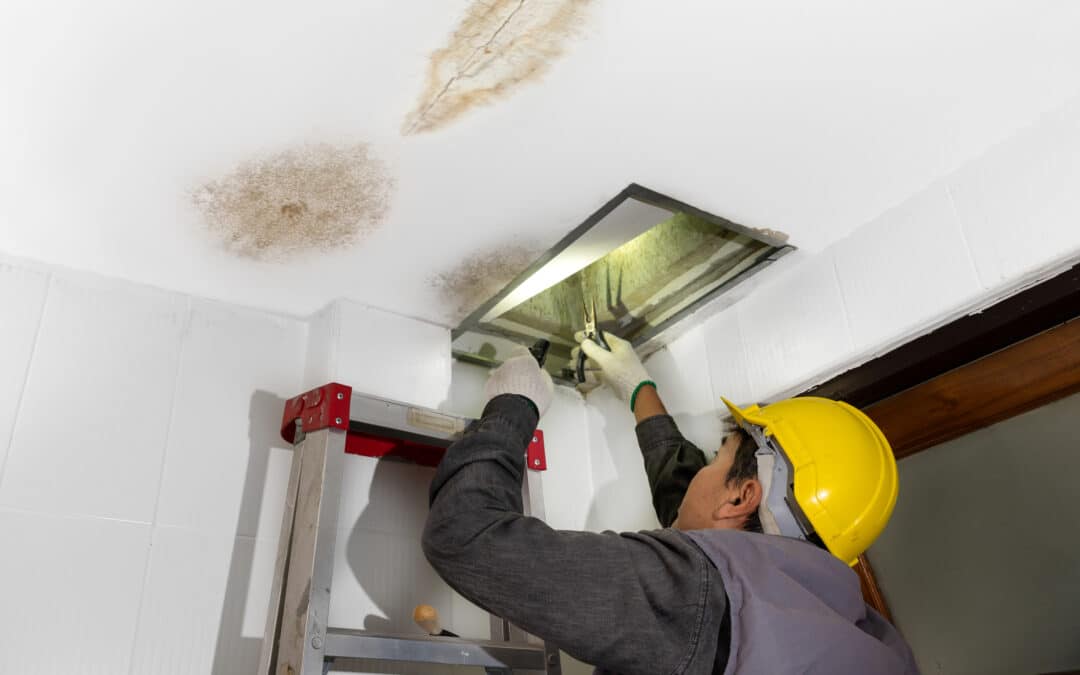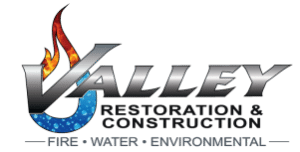Mold is one of the most difficult home restoration projects to deal with. These harmful spores can grow on practically any surface, are difficult to remove, and pose serious health risks.
Taking the required precautions, like maintaining low humidity levels within your home and performing routine cleaning, is the best way to keep mold out of your house. However, certain situations make mold growth unavoidable. When you spot mold in your home, you’ll need to understand the mold removal process and note the differences between mold removal vs. remediation.
Mold Removal vs. Remediation: Understanding The Key Differences
What is Mold Removal?
As the name implies, mold removal involves “removing the mold.” However, the mold removal process is much more complicated than simply removing it. We cannot eradicate mold from our ecology since they are an inherent component of it. It is impossible to eliminate all mold spores since they exist in indoor and outdoor environments. However, the key is to control their growth.
Mold removal removes mold growth from indoor spaces such as homes, buildings, and other structures. This is necessary when mold infestations become problematic.
Here are the key steps involved in the mold removal process:
- Assessment: A professional mold inspector or remediation specialist first assesses the extent of the mold problem. This involves identifying the type of mold, the source of moisture promoting its growth, and the affected areas.
- Containment: To prevent the spread of mold spores to other parts of the building, containment measures are implemented. This often includes sealing the affected area with plastic sheeting and creating negative air pressure to ensure mold spores do not escape.
- Mold Removal: The actual removal of mold is performed using various techniques, which may include scraping, sanding, or scrubbing the affected surfaces. Porous materials like drywall or insulation heavily infested with mold may need to be removed and replaced.
- Cleaning: After the visible mold is removed, the affected surfaces are thoroughly cleaned with specialized cleaning agents to eliminate any remaining mold spores.
- Drying: The affected area is dried to eliminate the moisture source that allowed the mold to grow in the first place. Proper ventilation and dehumidification may be necessary.
What is Mold Remediation?
Now that you have a better understanding of mold removal, you’re probably wondering, “What is mold remediation process?” Mold remediation refers to the collection of procedures to eliminate dangerous mold growth. Depending on the nature and area of the mold, it may involve mold testing, removal, demolition, disinfecting, containment, and mold cleaning. Remediation is done on materials that absorb mold spores, such as insulation, drywall, and carpeting.
A qualified mold remediation removal company like Valley Restoration should perform remedial work because it requires a thorough understanding of mold growth.
Differences Between Mold Removal vs. Remediation
Along with phrases like mold cleaning and restoration, mold remediation and removal are frequently used interchangeably among mold professionals. However, there are significant differences between mold removal vs. remediation procedures.
The primary distinction is that the removal process focuses on eradicating the mold, whereas the remediation process focuses on the materials the mold has damaged or affected. The primary purpose of mold remediation and remediation is to eliminate the mold infestation and lower the mold concentration to a level where it poses no threat to occupants’ health or the structural integrity of the building.
Although mold remediation involves some degree of the mold removal process, remediation is far more involved. Remediation aims to determine the source of mold growth and regulate the amount of mold already there. A thorough mold remediation procedure is what keeps potentially dangerous mold at bay. Understanding the severity of your mold development is the difference between needing mold removal vs. remediation.
Factors to Consider for Effective Mold Removal vs. Remediation
Assessing the Extent of Mold Growth
Before delving into the mold removal process, it is critical to understand how the mold grew. Understanding the scope of the problem is vital. Experts use various methods and instruments to asses mold contamination thoroughly. These include:
- Moisture Meters: Moisture meters are a critical tool for determining the amount of moisture in various materials. Professionals can identify high moisture levels on walls, ceilings, and floors, indicating potential mold growth.
- Infrared Cameras: Infrared cameras can detect temperature variations in building materials. They can see hidden moisture sources, even behind walls or ceilings, because moisture frequently changes temperature—experts can map out the full extent of the mold infestation.
A comprehensive assessment is the first step toward creating an efficient remediation strategy that addresses all impacted areas to minimize the chance of mold growth going unnoticed.
Determining the Source of Moisture Causing Mold Growth
Finding and fixing the moisture sources that encourage mold growth is essential for fighting it off successfully. Fixing leaks should be the first step. Check for leaks in foundations, roofing, windows, and plumbing. Repair leaks as soon as possible to stop more water from seeping in.
High humidity conditions are ideal for the growth of mold. Dehumidifiers can be used to keep indoor humidity levels below 60%. Pay special attention to places prone to moisture, such as basements, bathrooms, and kitchens. Ensure your home has adequate ventilation to reduce humidity and improve air circulation.
Condensation can provide the moisture that mold needs to grow. Examine your home to find and fix any possible moisture problems. Use insulation or better ventilation to keep condensation from building up on windows, pipes, and other surfaces.
Finding these moisture sources is essential to successful mold remediation removal and guaranteeing that mold does not recur in the future. Removing these moisture sources creates an unsuitable environment for mold growth and provides a solid basis for long-term mold prevention.
Proper Containment Measures During the Removal/Remediation Process
In the right circumstances, mold can grow rapidly. To stop spores from spreading to other parts of the property, technicians isolate the contaminated areas after repairing the source of moisture intrusion.
Containment is essential to reduce the possibility of cross-contamination to other unaffected areas. It’s crucial to use a proper ventilation system and air filtration devices (AFDs) to prevent mold spores from spreading from an infected area to an uninfected one.
Containing the contaminated area is not the only necessary precaution for mold remediation removal. Wearing personal protective equipment keeps mold remediation technicians safe in contaminated environments.
There is always a chance that mold spores could spread throughout the air during mold treatment. One’s health can be at risk, as this raises the possibility of breathing in these mold spores.
Among the equipment used to guarantee the safety of mold remediation specialists are gloves, full-body protective suits, and full-face respirators with integrated HEPA filters.
Utilizing Appropriate Equipment and Techniques for Effective Results
After determining the extent of the mold infestation and addressing the moisture sources, it is time to think about mold remediation removal methods that work. The remediation process requires meticulous preparation and implementation. Here are a few standard techniques for removing mold:
- HEPA Vacuuming: High-efficiency particulate air (HEPA) vacuums feature specific filters that trap microscopic mold spores, helpful in eliminating loose mold from surfaces. Nevertheless, HEPA vacuuming should be followed by thorough cleaning to prevent mold spores from being released into the air.
- Biocides and Antimicrobial Treatments: Antimicrobials and biocides are chemical agents that kill mold on surfaces. These treatments can be effective but must also be compliant with safety standards.
- Scrubbing: Scrubbing is a common approach for physically removing mold from surfaces. Use a scrubbing brush, sponge, and detergent to clean the damaged areas thoroughly. Scrubbing works well for hard surfaces like tile or glass.
- Negative Air Pressure: Negative air pressure machines ensure mold spores in the air are trapped and do not spread to unaffected areas. This containment technique is essential for preventing cross-contamination.
- Dry Ice Blasting: The dry ice-blasting mold removal process uses dry ice pellets. It’s safe for fragile materials and non-abrasive, leaving no trace behind.
- Media Blasting: Media blasting uses abrasive materials such as baking soda, corn cobs, or walnut shells to remove mold from surfaces. Media blasting may not be appropriate for all materials, but it removes mold from masonry and wood well.
- Deodorization: Mold infestations will leave behind foul odors. Deodorization methods, like air scrubbers with activated carbon filters, can assist in getting rid of these smells.
A mix of these approaches often ensures complete mold remediation removal. It’s crucial to remember that the choice of a mold removal process depends on aspects, including the type of material affected, the depth of the infestation, and safety issues.
Hire Valley Restoration for Your Mold Remediation and Removal
It’s a good idea to consult with professional mold remediation and removal specialists when handling large-scale mold infestations or areas that pose health risks. Valley Restoration is a professional restoration company that responds to housing emergencies around the clock. They focus on many different remediation techniques, promising an effective mold removal process and prioritizing your peace of mind. You can send inquiries about mold remediation and removal on their website anytime.
Determining whether you require a mold removal process or treatment is critical to addressing the issue successfully. Seeking expert assistance as soon as possible assures a thorough assessment, proper treatment, and prevention of potential health problems linked with mold exposure. Don’t allow mold to ruin your home—contact an expert today to create a healthy, mold-free atmosphere!


